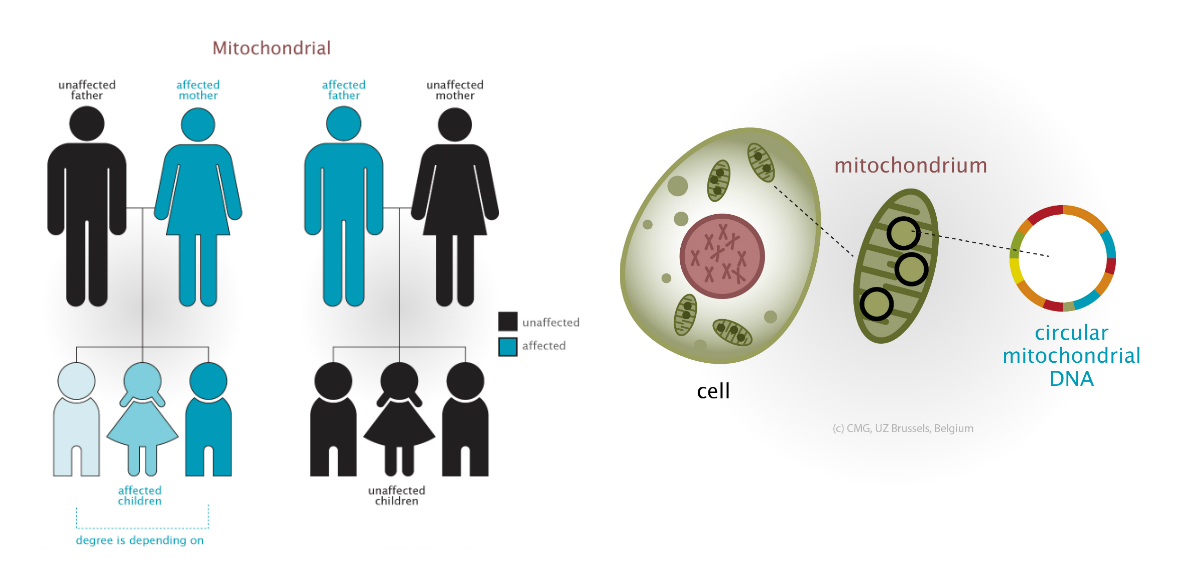Mitochondrial inheritance
In addition to chromosomal inheritance of nuclear DNA there is also mitochondrial inheritance, where specific characteristics are inherited exclusively from the mother (see mitochondrial DNA). This does not mean that a descendant is automatically affected by a mitochondrial DNA disorder: that will depend on the quantity of mitochondrial DNA that carries the disorder.
Continue reading below the images.
Circular DNA
Every mitochondrial DNA-ring contains 37 genes. The genes are always the same, but the circular DNA molecules in a cell are not all identical. If they are, we call this homoplasmy; if not, it is called heteroplasmy. This is important in determining whether or not inherited mitochondrial disorders are expressed.
Every cell contains 100 to 1,000 mitochondria and each of these contains many mitochondrial DNA molecules. So if all the mitochondria in a cell contain the same (mutant or normal) DNA, this is a different situation from a mixture of normal and mutant mtDNA. The percentage of mutant mtDNA that is present determines the extent to which the condition is expressed.
Difficult to diagnose
Problems with mtDNA are often difficult to diagnose. Although we know that a number of conditions occur as a result of mtDNA mutations, patients with the same disorder often display different symptoms.
What is more, mitochondrial abnormalities are often responsible for multi-system disorders: for example they may affect both the muscles and the nervous system. You will remember that the mitochondria are the power plants of our cells and therefore of the whole body. For example, if a problem arises in the respiratory system, this has consequences for other systems in the body that require a lot of energy. In mitochondrial disorders it is therefore often difficult to distinguish cause from effect.
